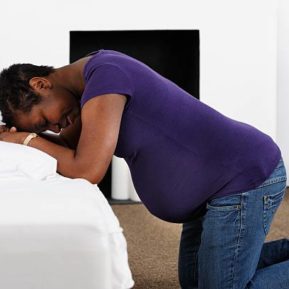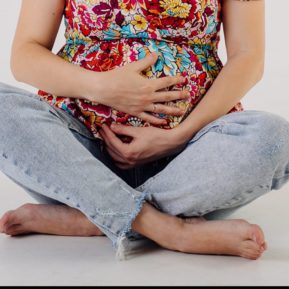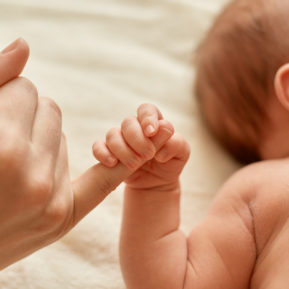After having a baby, it’s inevitable that postpartum you will look and feel different. Some of these changes will be temporary, but many will be there to stay for good.
Many of the initial changes can come as a bit of a surprise but it’s important to remember that bodily changes are a significant part of new motherhood.
What bodily changes can I expect postpartum?
Some of the immediate changes include:
- Swollen feet
- Body aches
- Heavy bleeding
- Wobbly tummy
- Night sweats
- Enlarged and tender breasts
- Urinary incontinence.
Temporary postpartum changes such as swelling, bleeding and body aches usually settle within a few days to a few weeks. If you are suffering from slight urinary incontinence after the birth, pelvic floor exercises should help to resolve it. If the problem persists, it’s time to call your care provider.
Your breasts postpartum
Breasts will often enlarge dramatically a few days after the birth when the milk increases. It can be accompanied by breast tenderness, which can happen whether you are breastfeeding or not. If you are breastfeeding, you’ll probably find that the breasts remain larger than normal for some time, usually throughout your breastfeeding journey.
Sometimes when breastfeeding stops, the breasts will reduce back to pre-pregnancy size but quite often they remain larger. Many women are concerned that breastfeeding causes saggy breasts, but in fact it’s the hormones and growth during pregnancy that causes breasts to sometimes sag. This happens to many women who don’t breastfeed but because it often occurs when you stop breastfeeding, due to the reduction in milk, it's wrongly associated with it.
Your postpartum belly
After having a baby, it’s inevitable that you will have a belly pooch. Your abdomen undergoes lots of changes during pregnancy, more so than any other part of your body. Age, genetics and weight gain can all play a part in how your belly appears after having a baby but stretch marks and wobbly bellies are totally normal.
The uterus also must take time to contract back down to its pre-pregnancy size so don’t expect overnight changes. It can take up to six weeks for the uterus to go back to its original size. Some women will be wearing their pre-pregnancy clothes within days of birth, but this is not true for the majority.
Women who are young, slim and fit/toned pre-pregnancy, but have put on little weight during pregnancy, are more likely to revert to their old clothes earlier. For the vast majority, this takes a significant amount of time. It can take up to a year to recover after having a baby
As the skin on the abdomen has been stretched to its limits during pregnancy, as have the muscles, it may never again be as taut as it was. Stretchmarks are a part of postpartum life for most women and they can’t be prevented. Genetics and weight gain play a role in whether you’ll get stretchmarks and how noticeable they will be. Stretchmarks may appear angry and red initially but as time goes on, they usually fade and don’t appear as prominent.
Due to the uterus growing and stretching the muscles in your belly, some women will suffer from diastasis recti, the separation of the abdominal muscles. This is often felt by putting your fingers in between the muscles to feel how far apart they are. Whilst most abdominal muscles will repair and tighten over time, occasionally they need a little help. A physiotherapist or postpartum fitness trainer may be able to help with exercises to correct it.
Accepting your new body image is not always easy but here are some tips to help you cope:
- Adjust your expectations – Remember that everyone is different, and their postpartum journey will be too. Don’t put too much pressure on yourself
- Let go of the scale - One of the quickest ways to start feeling better in your postpartum body today is to stop hopping on the scales everyday
- Forget pre-pregnancy clothes for now - You may feel more comfortable wearing your maternity clothes. It’s unlikely you’ll jump back into pre pregnancy clothes for some time, so for now, comfort is key! Loose fitting clothes will make your recovery easier.
- Detox from your social media – ‘snap back’ culture is toxic. It harbours unrealistic expectations for most people. Snapshots of motherhood on social media are often just as unrealistic. If you are feeling the pressure from social media, it may be an idea to give it a rest for a while or limit your usage.
- Forget the postpartum diet plan – All too often, these post pregnancy diet plans are looked upon as a wonderful, magical quick fix to returning to your pre-pregnancy shape. When you have other things that are occupying your mind and time (i.e. a baby) many of these plans are destined to fail. Intuitive, healthy eating combined with regular light exercise such as walking (when you feel up to it) is the best way to work towards a healthy postpartum lifestyle.
Sign up today for unlimited access:
- Book appointments
- Expert advice & tips
- Premium videos & audio
- Curated parenting newsletters
- Chat with your bloss community
- Discounts & competitions
- Special events





Leave a Rating / Review
You must be logged in to post a comment.